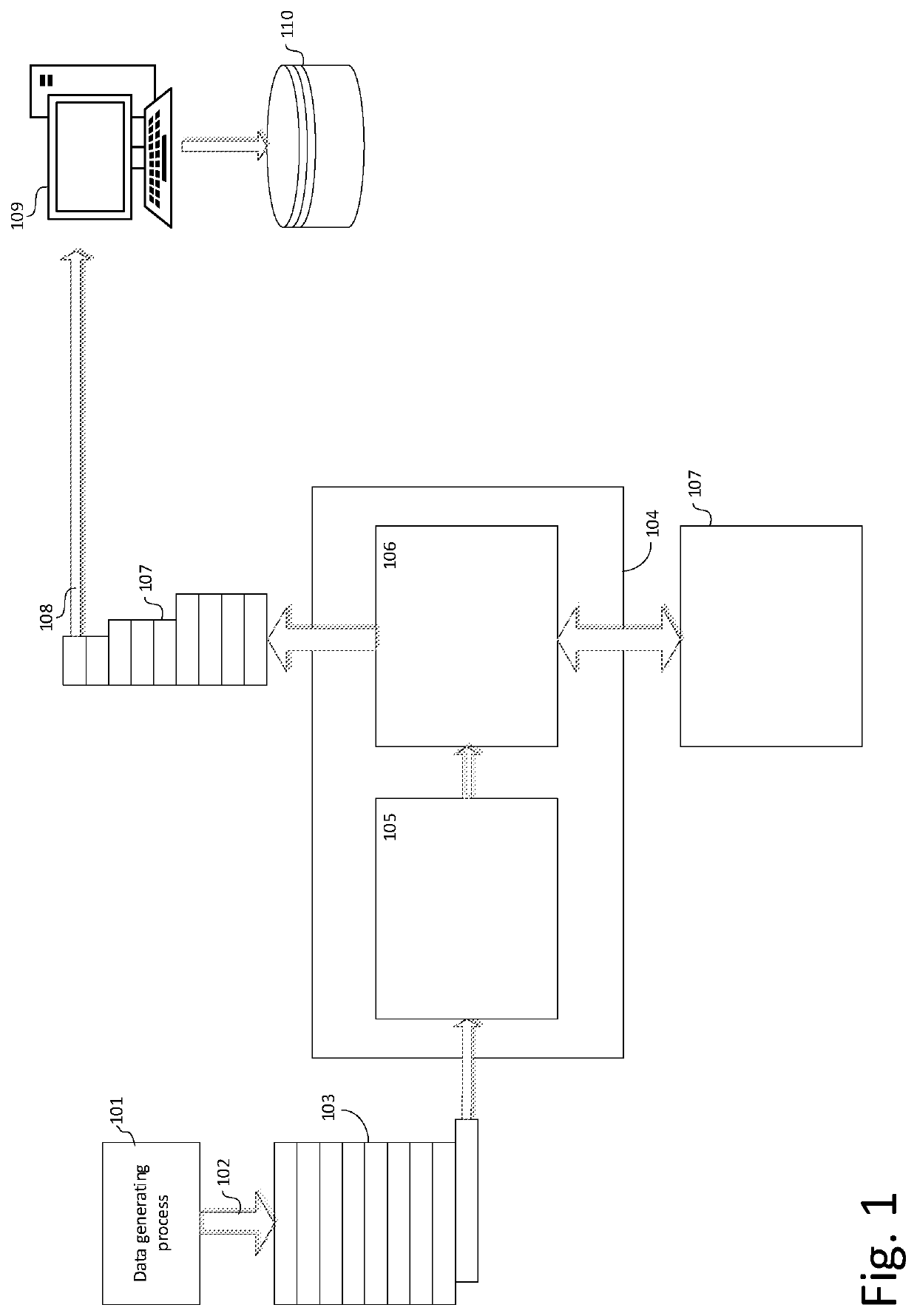Method for handling multidimensional data
a multi-dimensional data and processing method technology, applied in multi-dimensional databases, code conversion, instruments, etc., can solve the problems of insufficient processing task, noise, and inability for a human to extract important data from insignificant or irrelevant data, and require a large amount of processing power
- Summary
- Abstract
- Description
- Claims
- Application Information
AI Technical Summary
Benefits of technology
Problems solved by technology
Method used
Image
Examples
Embodiment Construction
[0073]Reference is first made to FIG. 1 which is a conceptual illustration of a system operating in accordance with the principles of the invention. A data generating process 101 delivers a stream of raw data 102 to an input buffer 103. In this example it can be assumed that each sample is a vector representing K values from a corresponding number of sensors at a point in time. However, the samples (“records”) may equally well represent, for example, different experimental conditions (e.g. temperature) or spatial locations, or preprocessed data originating from only one sensor (e.g. sub-bands of an audio signal received from one microphone). The number of samples, N, may be fixed, but typically the process 101 is continually sampled and data will keep coming in at a steady rate, and be treated as a sequence of individual records or of batches of records. The number N will then grow correspondingly. The K different sensors may represent different wavelengths of light, levels of sound...
PUM
 Login to View More
Login to View More Abstract
Description
Claims
Application Information
 Login to View More
Login to View More - R&D
- Intellectual Property
- Life Sciences
- Materials
- Tech Scout
- Unparalleled Data Quality
- Higher Quality Content
- 60% Fewer Hallucinations
Browse by: Latest US Patents, China's latest patents, Technical Efficacy Thesaurus, Application Domain, Technology Topic, Popular Technical Reports.
© 2025 PatSnap. All rights reserved.Legal|Privacy policy|Modern Slavery Act Transparency Statement|Sitemap|About US| Contact US: help@patsnap.com



